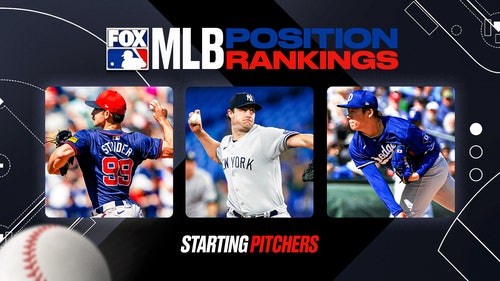
Bay is poster child for Mets' downfall
Mets officials say Jason Bay is continuing to experience headaches following a concussion he suffered last month. At least that’s the company line. Teammates indicate Bay’s suffering goes beyond that, as he’s been overcome by nausea, sometimes throwing up in his car.
No one expects Bay to return to the lineup anytime soon, and there’s a possibility he’s played his last game in 2010. If so, it would be an unfortunate end to Bay’s debut in New York, during which he proved to be a hard worker and upstanding citizen in the clubhouse -- but, as the Mets’ hierarchy grudgingly concedes, one of their greatest miscalculations.
Bay, after all, was supposed to bring his 30-plus home run power to Citi Field and turn the Mets into a run-scoring machine. His resume was a general manager’s dream, including the winning pedigree he’d acquired with the Red Sox, exposure to pennant race pressure and an understanding of how to survive big-market scrutiny.
Yet, by the time Bay crashed into the wall at Dodger Stadium on July 23, he had morphed into near-invisibility: he’d had only four singles in 26 at-bats since the All-Star break ( a .154 average) with no extra base hits and no RBIs.
That kind of under-performance mirrored Bay’s mystifying inability to hit home runs as a Met. Despite blasting 36 HRs with Boston last year, Bay had hit just six at the time of his injury. If he’s indeed unable to return this season, Bay’s failure will be remembered as one of the costliest in Met history.
The four-year, $66 million deal Bay agreed to in January was the Wilpon family’s last big-money transaction. The Mets' unwillingness to take on additional payroll at the trade deadline last month cemented suspicions that they're in financial distress. If that’s true, Bay may have indeed broken the bank in Flushing.
No one feels worse about it than Bay, who quickly won the respect of his teammates with his low-key, honest demeanor. Bay seemed to understand that his acceptance from the fans was purely conditional: they’d love him only as long as he hit. Having played in Fenway Park for parts of two seasons and having replaced Manny Ramirez, Bay was no stranger to tough crowds.
But nothing seemed to prepare him for Citi Field’s 16-foot wall in the gaps, even though one major league talent evaluator said, “Bay shouldn’t have been bothered by (Citi Field’s size). He has enough power to hit it out anywhere.”
So what, exactly, went wrong? First-year jitters are a likely cause, even for someone so grounded and level-headed as Bay. But he went from a winning culture in Boston to one steeped in mediocrity. As the Mets plunged down toward their fourth straight season out of the playoffs, Bay simply lost his spark.
That’s not to say Bay can’t get it back in 2011. But the Mets are facing an enormous challenge this winter, trying to find a new business plan that’ll keep them competitive in a big market without making the same mistakes of the last four years.
The Mets will need a new manager; that’s a given. Jerry Manuel all but lost his job this week when the Mets went 2-4 on an Atlanta-Philadelphia road trip that everyone deemed desperate. That left them nine games out with 51 to go, which was as good as turning the page to pitchers-and-catchers on Feb. 15.
Rehabilitating the Mets will take more than simply firing Manuel, of course. The entire organization needs a make-over, specifically in the way it evaluates talent, in how it spends money, even in how it relates to the public.
Nothing was more outrageous to Mets’ fans than hearing owner Fred Wilpon say his son Jeff was doing an “excellent” job as the COO, adding, “everyone knows that.”
The elder Wilpon’s assessment wasn’t just wrong, it illustrated how tone-deaf the Mets’ hierarchy is. Fans have demonized the Wilpons since 2006, the last successful season in Flushing, and have begun a slow but steady exodus. Since 2008, the final year at Shea Stadium, the Mets’ attendance is down some 33 percent, including a 15 percent drop-off from Citi Field’s opening season in ’09,
Unless the Mets find a way to reverse their fortune, they’re facing the possibility of drawing in the low 2-million range in 2011, an embarrassing showing for a franchise with a beautiful ballpark, a payroll that’s among the highest in the National League and a stand-alone regional sports network, SNY.
If the attendance continues to drop, nearly half of the fans who paid to see the Mets in 2008 will be gone in 2011. That’s a depressing scenario not just for Met fans, but for baseball purists who believe New York need two strong teams.
Bay was supposed to help balance the equation with the Yankees, but just like so many of the Mets’ other choices, it looks like they picked the wrong horse. At least that was the case in 2010. Fingers crossed, the Mets are praying for better luck in 2011.










